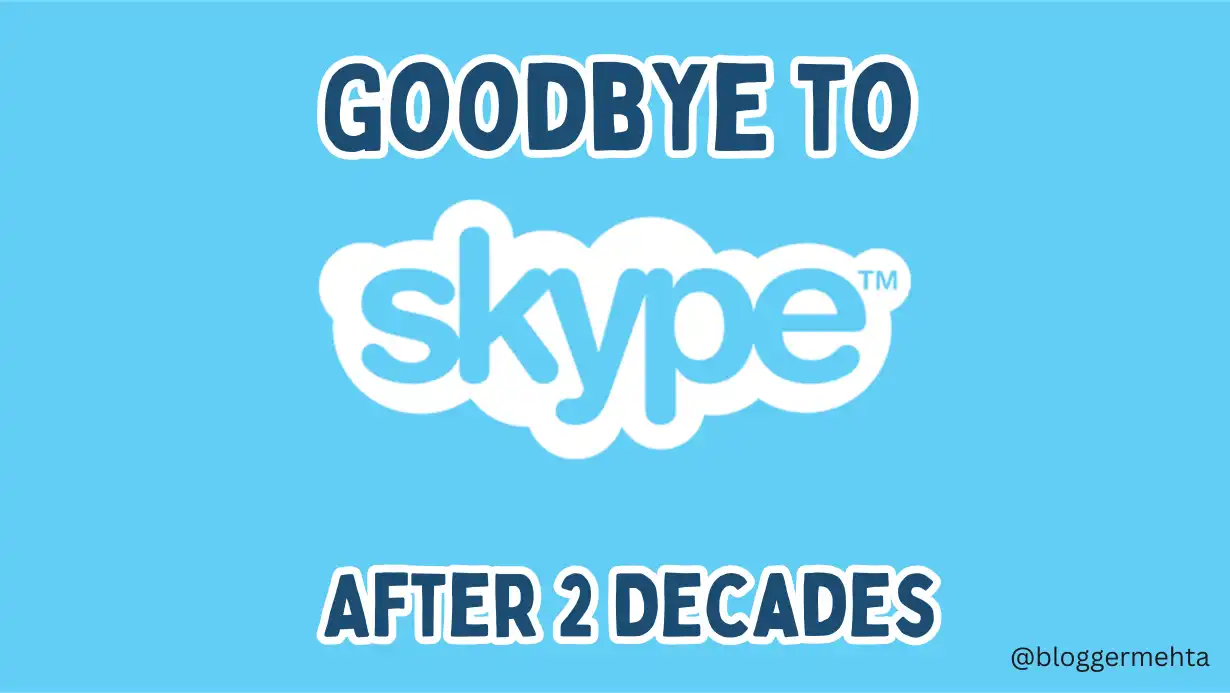A Farewell to the Skype: On May 6, 2025, Microsoft officially shut down Skype, the video-calling service that once revolutionized global communication. After more than 20 years of helping people connect across continents, Skype’s shutdown marks the end of an era in digital communication history.
Announced earlier this year, Microsoft’s decision to discontinue Skype wasn’t entirely unexpected. Still, for millions of longtime users, the moment carries emotional weight—this was the platform through which families stayed connected, colleagues held virtual meetings, and friendships thrived across borders.
The Rise and Fall of Skype
Founded in Luxembourg in 2003 by Niklas Zennström (Sweden) and Janus Friis (Denmark), Skype was a revolutionary concept at the time. It allowed people to make free voice and video calls over the internet, sidestepping costly international telephone charges. It quickly became a favorite, especially among international travelers, expats, and remote workers.
At its peak, Skype was a global force, boasting hundreds of millions of active users each month. In addition to Skype-to-Skype calls, the service also offered calling to landline and mobile numbers using Skype Credit or subscriptions—further broadening its reach.
Microsoft’s $8.5 Billion Bet
In 2011, Microsoft purchased Skype for $8.5 billion, aiming to integrate it into its broader Windows and Office ecosystem. Over the next decade, Skype became part of daily work life, family chats, and international conferences. Yet despite Microsoft’s efforts, Skype gradually lost ground to faster-evolving competitors like Zoom, WhatsApp, and Google Meet.
One of the reasons for its decline was the lack of significant innovation in a rapidly transforming tech landscape. Competitors offered better user interfaces, quicker updates, and more intuitive mobile apps.
The Emergence of Microsoft Teams
Ironically, Skype’s successor came from within its own family. In 2017, Microsoft launched Teams, a collaboration tool aimed at businesses and enterprises. With its integration into Microsoft 365 and features like real-time chat, video meetings, file sharing, and productivity tools, Microsoft Teams quickly became a powerful force in the corporate world.
As hybrid and remote work became the norm—especially during the COVID-19 pandemic—Teams surged in popularity, outpacing Skype in both functionality and user base.
The Final Goodbye — But Not the End
On Monday, the Skype team posted on X (formerly Twitter):
“As we say goodbye to Skype, we want to thank our incredible community. Over the years, you’ve connected with family, friends, and colleagues across the world. This isn’t the end—it’s a new beginning. Join us on Microsoft Teams Free and continue making great memories.”
From Tuesday, May 6, 2025, Skype is no longer available for use. Microsoft now encourages users to migrate to Microsoft Teams Free, which offers similar features with a more modern, integrated experience.
What Users Should Know
- Skype is officially discontinued as of May 6, 2025.
- Existing users can transition to Microsoft Teams Free for continued communication and collaboration.
- Teams Free allows video calls, group chats, file sharing, and more—making it a robust replacement for personal and professional use.
- Although Skype had dropped to just 30 million monthly users (according to Similarweb) by the time of its shutdown, it still held nostalgic and practical value for many.
Conclusion: A Legacy That Shaped the Internet
Skype’s shutdown is more than just a product being retired—it’s the curtain call for one of the most influential communication tools of the internet age. From grandparents talking to grandchildren abroad, to entrepreneurs conducting interviews with clients overseas, Skype changed the way people stayed connected.
Now, with Microsoft Teams leading the way, the spirit of Skype lives on in a new form, adapted for a new generation of users and needs.
